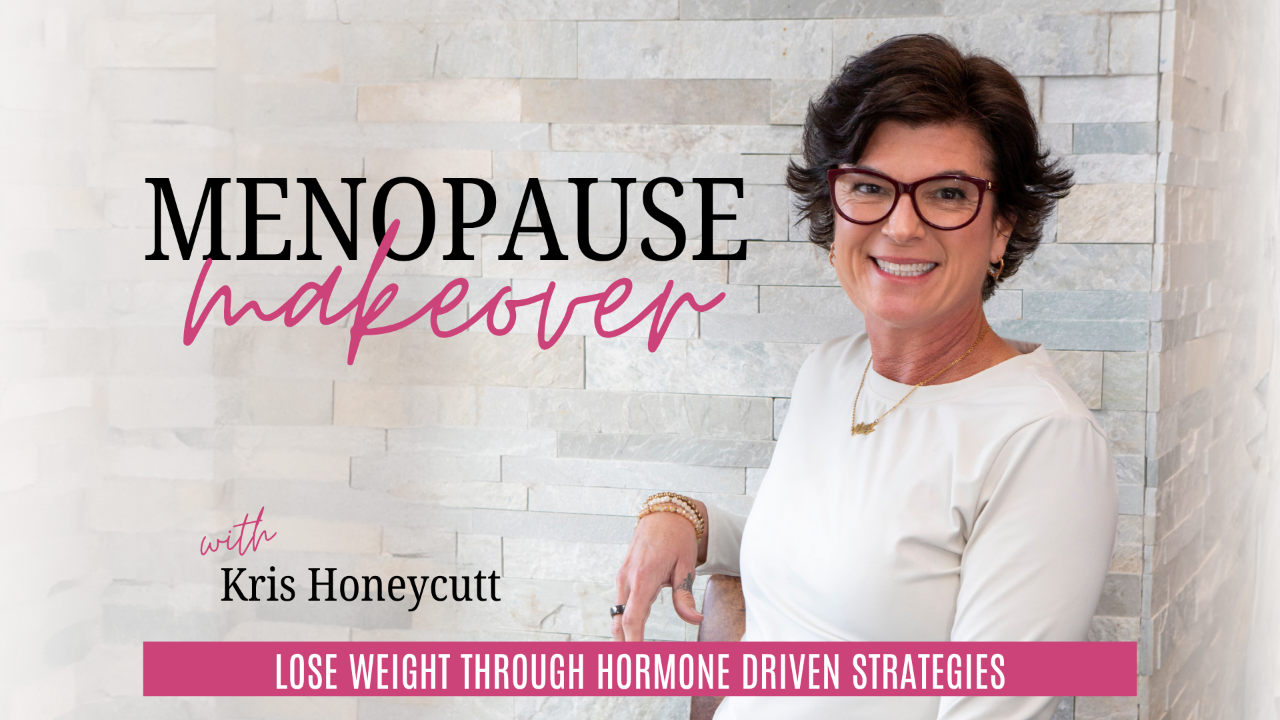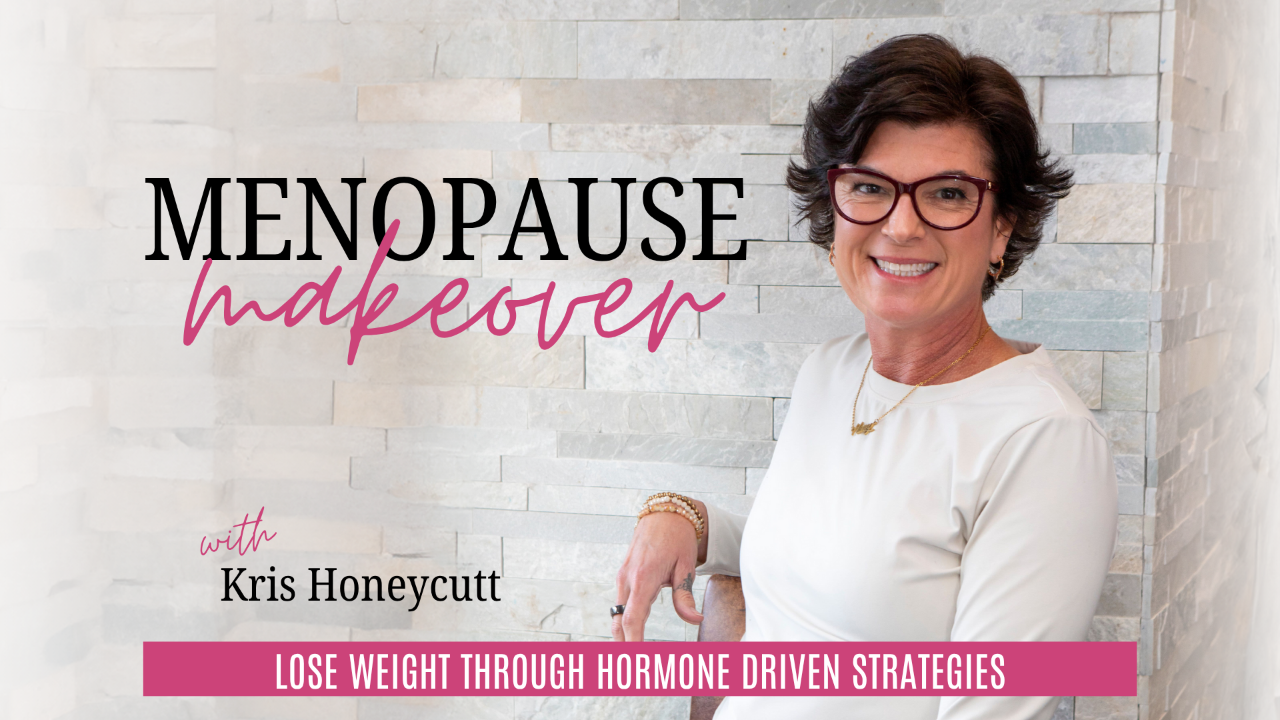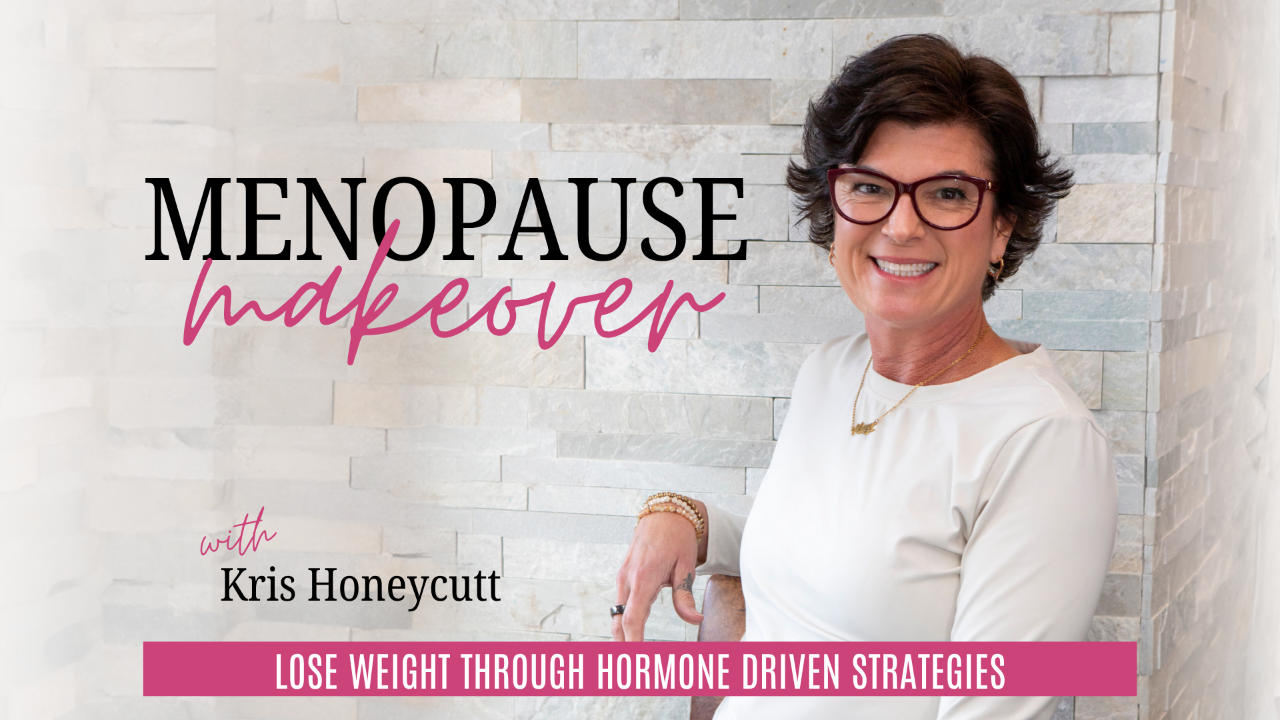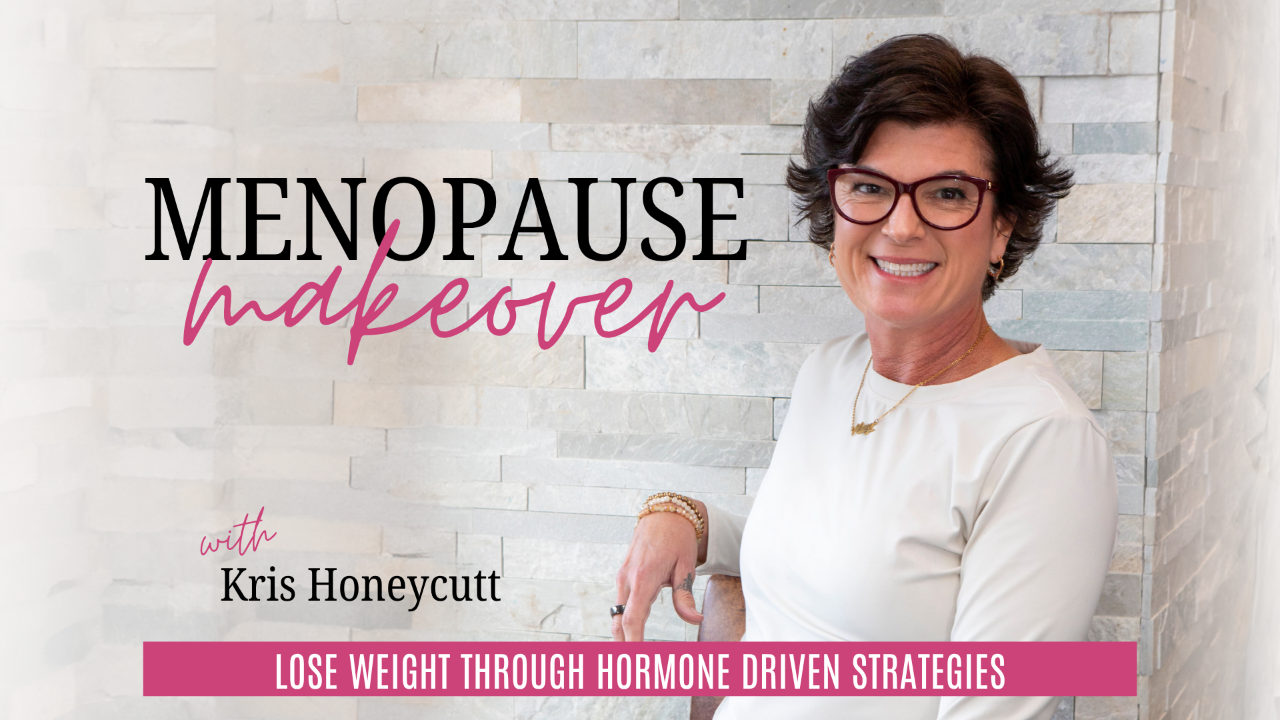How Long Does It Take To Lose Belly Fat & Build Muscle After 40?

Apple Podcast - Spotify - YouTube
If you’ve ever whispered, “Why is this taking so long?” while staring at your belly or wondering if your strength training is actually doing anything… friend, you are in good company. Every week inside my coaching world, midlife women ask the same honest question: How long does body recomposition take in menopause? In other words, how long does it take to lose belly fat and build muscle after 40?
If you’ve been showing up, lifting weights, eating your Trim Healthy meals, and still feeling frustrated by slow progress, this post will help settle your heart and renew your perspective. Because the truth is: your midlife body is working. It’s responding. And it’s changing—just not always on the timeline you want.
Let’s walk through what body recomposition really looks like in menopause, what slows it down, what speeds it up, and why consistency is the biggest spiritual and physical discipline you can bring to this journey.

What Is Body Recompos...
3 Midlife Mistakes Keeping You From Losing Belly Fat

Apple Podcast - Spotify - YouTube
If you’re in your 40s, 50s, or 60s and noticing more softness around your midsection, I want to start by saying this clearly and lovingly: nothing about you is broken. You aren’t weak, you aren’t failing, and you haven’t “let yourself go.” The truth is far simpler — your body is changing, and changing bodies need new strategies.
Every week, women tell me the same story: “I’m walking daily, eating healthy, and doing everything I used to… but my belly fat won’t budge.” If that sounds familiar, you’re in the right place. After coaching midlife women for years, I’ve seen three specific mistakes that quietly sabotage metabolism and belly fat loss. And once you understand what’s happening, you can finally work with your changing hormones instead of fighting them.
Let’s walk through these three mistakes together, and more importantly, let’s talk about what actually works.
Mistake #1: Relying on Zone 2 Cardio to Lose Belly Fat
Zone 2 cardio is t...
You’re Eating Protein… So Why Aren’t You Losing Belly Fat or Building Muscle?

Apple Podcast - Spotify - YouTube
Affiliate Disclosure: Some links are affiliate links. If you make a purchase, I may earn a small commission—at no extra cost to you. Thanks for supporting the show!
Why Midlife Feels Different (and What to Do About It)
If you’ve been eating healthy, lifting weights, and doing “all the things” — but still staring at that stubborn belly fat or feeling like your muscle tone is disappearing — you’re not alone, friend.
This season of life hits different. Once estrogen begins to decline, your body stops responding to food and exercise the same way it did in your 30s. The exact same meal that used to help you maintain muscle and a trim waistline now… doesn’t.
This is called anabolic resistance — your muscles simply need a stronger signal to grow. That’s why so many midlife women say, “I’m eating my protein, so why isn’t it working anymore?”
There’s a missing piece — and it’s a big one.
That missing piece is a muscle-building amino acid called leu...
3 Reasons You’re Not Losing Weight After 40 Even If You Exercise Daily

Apple Podcast - Spotify - YouTube
If you’ve been doing all the “right things”—eating healthy, moving your body, staying on plan—and still can’t lose that stubborn belly fat, I see you, friend. It’s one of the most common frustrations I hear from women in midlife:
“Kris, I’m exercising every day, but my body just isn’t responding anymore.”
The truth? It’s not that you’re not trying hard enough. It’s that your body has changed. The same workouts and routines that once worked in your 30s may now be keeping you stuck.
Let’s unpack why—and how you can start seeing results again, without living at the gym.
Why What Used to Work Doesn’t Work Anymore
When estrogen begins to decline in perimenopause and menopause, it affects everything from how your body stores fat to how efficiently it builds muscle.
Estrogen used to help regulate insulin and protect your muscle tissue. When it drops, your metabolism slows, and your body becomes less sensitive to insulin. Translation? You store ...
Are You Eating the Right Way to Strength Train and Lose Weight?

Apple Podcast - Spotify - YouTube
This post contains affiliate links to products. I may receive a commission for purchases made through these links.
If you’ve ever thought, “Why do my workouts feel so much harder than they used to?”—you’re not imagining it. Midlife changes everything. The same meal planning and workouts that worked in your 30s don’t always cut it in your 40s and 50s.
Your hormones have shifted. Your stress resilience is lower. Your recovery takes longer. And if you’re still trying to lose weight by eating less or fasting through your workouts, you’re actually working against your body, not with it.
Let’s talk about how to fuel smarter. In this post, I’ll walk you through three keys to fueling your midlife workouts so you can build strength, balance hormones, and finally see results again—without exhaustion, deprivation, or guilt.
Why Fueling Changes in Midlife
In perimenopause and menopause, your body becomes less resilient to stress. What used to ...
5 Powerful Tools To Support Hormones For Better Weight Loss

Apple Podcast - Spotify - YouTube
If you’re in midlife and feel like your hormones, weight, and energy are all out of whack, you’re not alone. I hear from so many women who say, “I don’t even feel like myself anymore.” Between hot flashes, brain fog, stubborn belly fat, and unpredictable moods, it’s easy to think your best days are behind you.
But friend, that’s not true. You can feel strong, clear-headed, and vibrant again. In fact—you can feel even better than before. The key is learning how to support your hormones with simple, practical tools that work in this season of life.
Today I’m sharing five powerful Trim Healthy-inspired strategies that will help you balance hormones, lose weight, and show up for your life with energy and confidence.

Tool #1: Build Every Meal on Protein + Plants
If you’ve followed Trim Healthy Mama for a while, you know that protein is the anchor of every meal. But in midlife, it becomes non-negotiable. Every meal should include at least ...
2 Powerful Exercises That Beat Belly Fat In Perimenopause And Menopause

Apple Podcast - Spotify - YouTube
Why Cardio Isn’t the Queen Anymore
I grew up in the 80s and 90s with leg warmers, Jane Fonda, and step aerobics leading the fitness scene. Back then, cardio was the queen. We were taught that the more you sweat it out on the treadmill or in an aerobics class, the more calories you’d burn, and the more weight you’d lose.
But here’s the thing: in perimenopause and menopause, more cardio doesn’t equal more fat loss. In fact, it often backfires. Long sessions of running, cycling, or high-impact classes actually raise cortisol, your stress hormone. And when cortisol goes up, guess what else goes up? Belly fat.
This doesn’t mean cardio is bad or that you should never do it. But it’s no longer the star player. Midlife bodies need a smarter strategy—one that works with your hormones, not against them.

How to Burn Fat Without Burning Out: Best and Worst Cardio for Women Over 40

Apple Podcast - Spotify
Why Traditional Cardio Isn’t Working Anymore
Let’s just say it: what used to work doesn’t anymore.
If you’ve been logging miles on the elliptical, sweating it out with daily high-intensity workouts, or pushing through long cardio sessions hoping to burn off that menopause belly, I see you. I’ve been there too. And the truth is—especially in midlife—more cardio is not better.
In fact, for many women over 40, too much of the wrong kind of cardio can actually work against you.
As a Trim Healthy Mama coach, menopause fitness specialist, and personal trainer in my own midlife season, I’ve had to completely rethink how I move my body—and I’ve coached hundreds of other women through that same shift.
Let’s break down what you really need to know about cardio in your 40s, 50s, and beyond, so you can work smarter (not harder), protect your metabolism, and finally feel strong in your skin again.
The Hormonal Shift That Changes Everything
Can metabolism cha...
Why Can’t I Lose Weight in Menopause? A Midlife Woman’s Guide to Breaking Through

Are you doing all the things and still not losing weight?
You’re not alone.
For many women, what worked in their 30s and early 40s just doesn’t cut it anymore.
If you’re in midlife and struggling with weight gain or slow weight loss, let’s talk about why it happens and, more importantly, what you can do to turn things around.

Why Is Weight Loss Harder During Menopause?
- Hormonal Shifts
One of the biggest reasons weight loss feels harder in menopause is the decline of estrogen. Lower estrogen levels directly impact how and where your body stores fat, particularly in the abdominal area.
Estrogen also plays a role in regulating insulin sensitivity. As it declines, blood sugar levels fluctuate more easily, leading to increased fat storage. Add rising cortisol levels from stress, and it’s no wonder your body feels out of balance.
- Muscle Loss and Metabolism
Starting in your 40s, you naturally lose muscle mass if you’re not actively maintaining it. Since muscle is...
7 Benefits of Using a Vibration Plate During Menopause

MUSIC PROVIDED BY - https://www.purple-planet.com/
Apple Podcast - Spotify
The Whole Body Vibration Plate – A Game-Changer for Women in Midlife
Struggling with stubborn weight, achy joints, or trying to find the energy to stay on track with your health goals during menopause? If that sounds like you, let me introduce you to one of my absolute favorite tools: the whole-body vibration plate.
Now, I’ll be the first to admit—I don’t jump on fitness fads. But after diving into the science and trying it myself, I’m here to tell you this tool is a game-changer for women in midlife. Whether you’re navigating hormone changes, recovering from an injury, or looking for a way to boost your results, the vibration plate might just be your new best friend.
Let’s talk about why this tool is so valuable and how it can fit into your midlife health journey.
What Is a Whole Body Vibration Plate?
At its core, a whole-body vibration plate is a platform that sends gentle vibrations thr...


